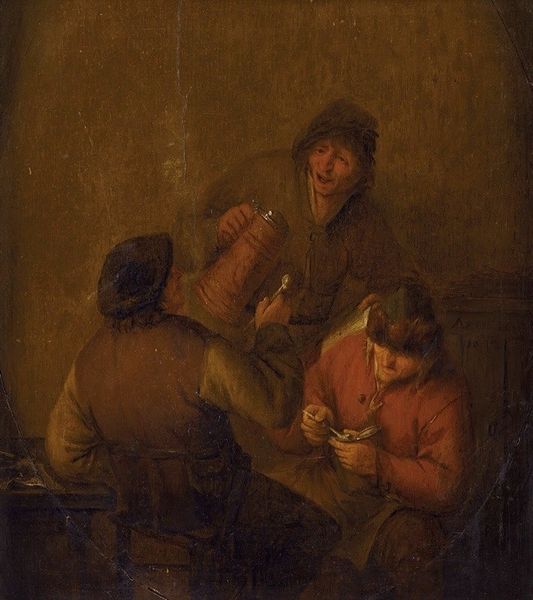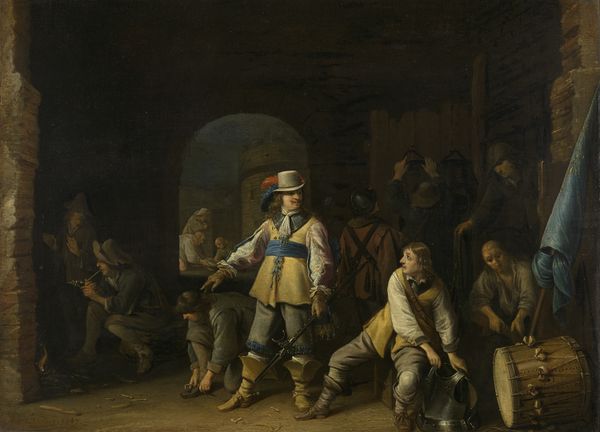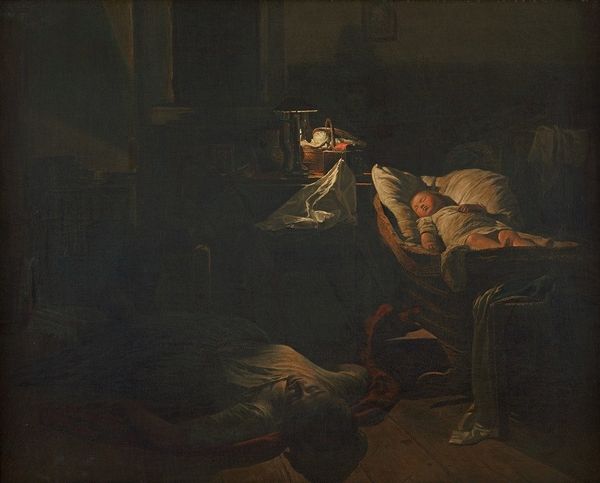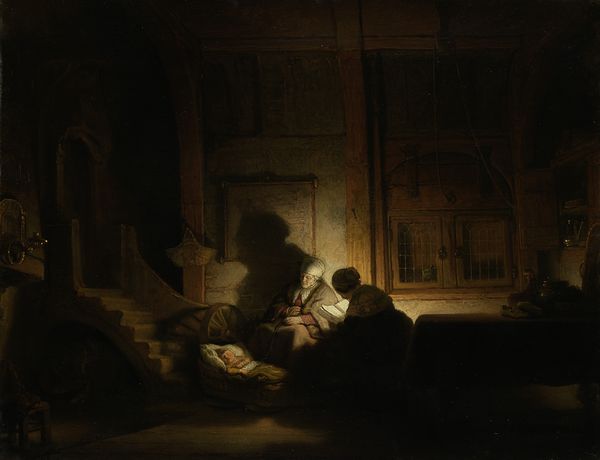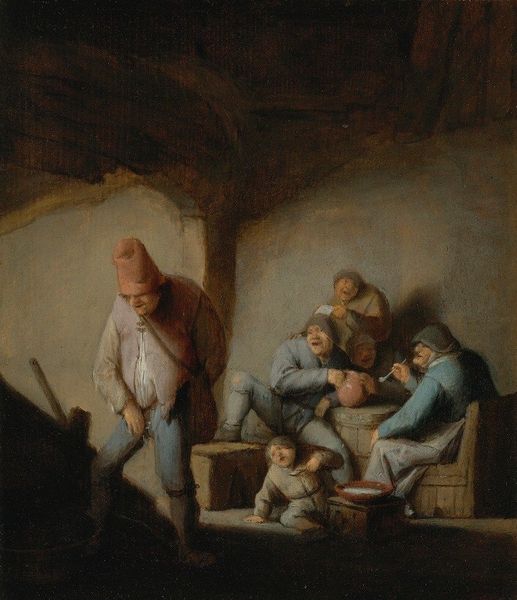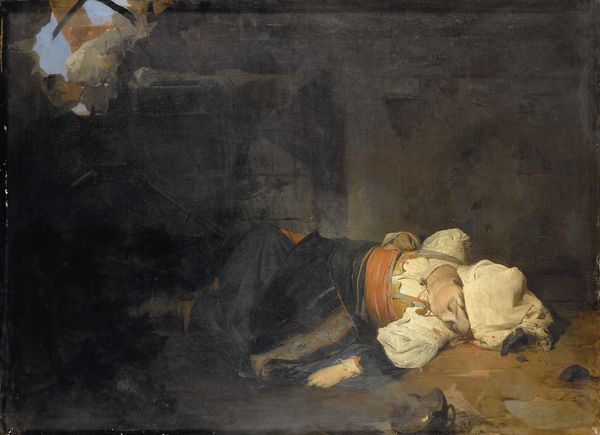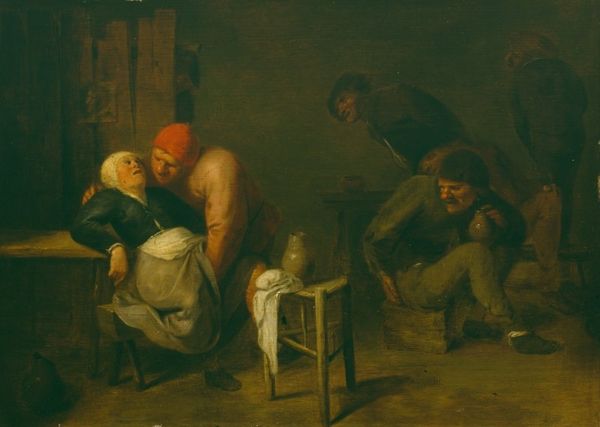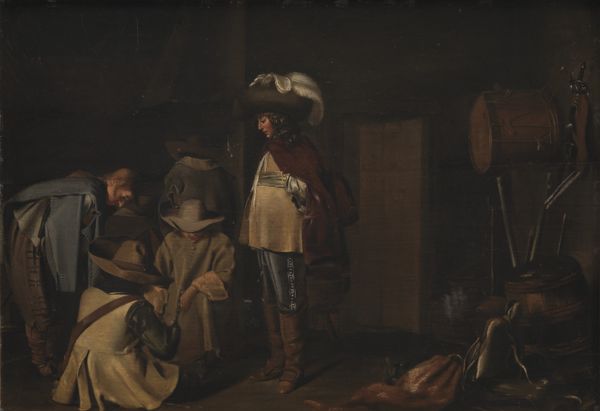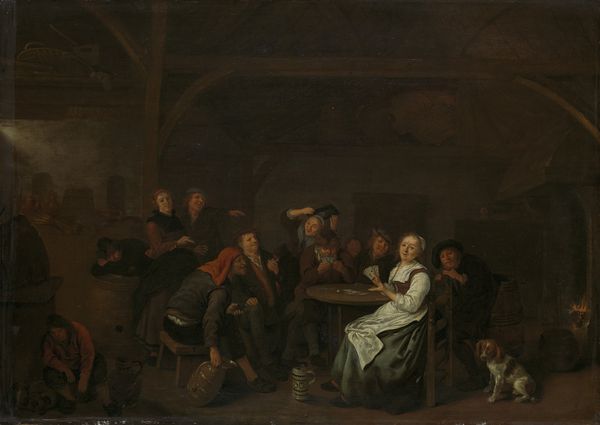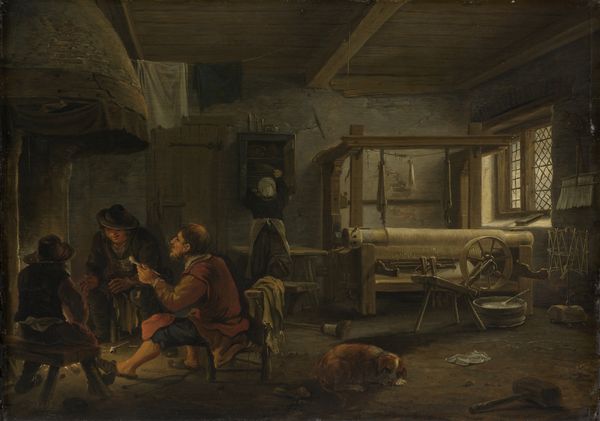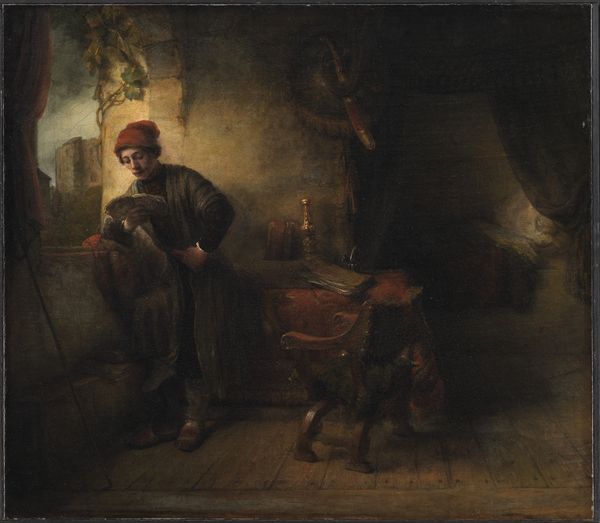
painting, oil-paint
#
portrait
#
figurative
#
baroque
#
dutch-golden-age
#
painting
#
oil-paint
#
figuration
#
genre-painting
#
realism
Copyright: Public Domain: Artvee
Curator: Welcome. We are looking at a painting by Adriaen van Ostade, "Genre scene in an interior". Although it is undated, the work exemplifies his focus on everyday life among the lower classes during the Dutch Golden Age. Editor: My first thought is of deep shadows and quiet intimacy. The scene feels incredibly enclosed, almost claustrophobic, despite the figures' apparent domesticity. Curator: Indeed, Ostade often portrayed peasants and working-class families in such settings. He was part of a broader artistic trend of realism, which gained momentum in the 17th century Netherlands with increased patronage from the growing merchant class who wanted depictions of their own, their life, or representations of common citizens and everyday situations instead of just noble portraiture. Editor: Notice the light source. It’s ambiguous. The strongest illumination focuses on the seated woman, drawing attention to her weathered face and hands. She’s a maternal figure but her pose also suggests fatigue and endurance. Her dark clothing gives off a subdued feel in combination with the earthen colored surroundings. Curator: Right. Ostade used light and shadow to create dramatic effects, popular with Baroque painters. It elevates the image by the tenebrism. While the subject matter and the light would draw viewers in, others critiqued this focus, pointing out that some genre scenes glorified poverty instead of showing the whole of the societal impact. Editor: And observe the details, the rough textures of the fabrics and the worn wooden tools—they’re symbolic of hardship. The man standing seems protective. Is it possible, despite the obvious poverty, that these symbols are meant to portray more virtuous family values among a particular class, contrasting them to those of the upper class, as did similar artwork of this time? Curator: Some interpretations certainly propose that the values of simplicity and community could represent the common worker's resistance to changing social norms. I feel that, at times, art was created to evoke compassion and empathy towards people’s working lives and situations, with that, class boundaries are dissolved, giving space for compassion to a large public, especially with genre painting. Editor: Van Ostade's "Genre scene in an interior" opens a small window into the everyday realities of the 17th century, filled with quiet dramas of daily living. Curator: Van Ostade's painting allows us to better contemplate representations of historical periods, class, and social mores.
Comments
No comments
Be the first to comment and join the conversation on the ultimate creative platform.
